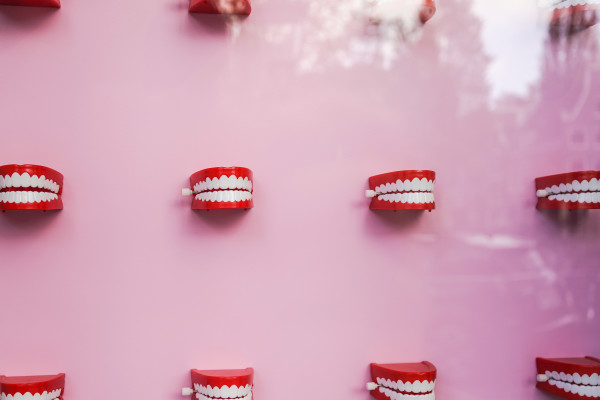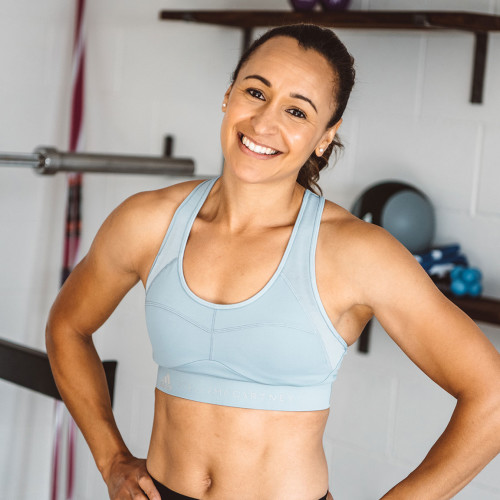How to fuel your Follicular Phase to feel great
2 years ago
Cycle syncing2 years ago
Cycle syncing
Across the Follicular Phase of your menstrual cycle we up the intensity of your sessions, so it’s important to eat smart to support training gains. Dr Emma Ross and Jess Ennis-Hill tell us more...
Reviewed by: Dr Emma Ross
During the Follicular Phase of your menstrual cycle, oestrogen is on the rise; your motivation to train can be higher and your muscle adaptation is on fire. This makes it a great time to increase reps, add sets and really push for training gains.
To help you capitalise on these amazing physiological changes, your Jennis CycleMap features a lot more high intensity sessions and we’ll be pushing you quite hard . So, how can what you eat help?
“There’s been a dangerous carb-bashing trend over the past few years, with a succession of diets promoting carb dodging for weight loss,” says Jennis Physiologist, Dr Emma Ross. “I really don’t like this message, as carbs are incredibly important for fueling and literally fuel everything we do.”
“Because of this, when we’re doing back-to-back strenuous sessions across the Follicular Phase, it’s really important to fuel at the right time – and that means including carbs both pre workout and after a session.”
Carbs will be your main source of fuel during each of these sessions, so aim for your meal to be 50% good quality carbs.
To make sure you have enough fuel in the tank pre workout, Emma suggests that you plan in a meal 2-3 hours before you train, so you’re topped up with energy and ready to go.
Carbs will be your main source of fuel during each of these sessions, so aim for your meal to be 50% good quality carbs like oats, quinoa or brown rice, then split the other half between protein, a small amount of healthy fat and vegetables or salad.
A couple of good breakfast options are:
Oats with chia seeds and berries
Whole grain toast with eggs, spinach and smoked salmon
Greek yoghurt with seeds and carb-rich fruit such as mango, apple and blueberries
A couple of meal options are:
Baked salmon and broccoli with lentils
Roasted peppers stuffed with quinoa, avocado and nuts
Grilled chicken breast with brown rice and leafy greens
If you like to work out as soon as you wake up, it’s likely that you won’t have 2-3 hours to digest a meal before your session. So, make sure your evening meal doesn’t skimp on good quality carbs. Sweet potato, lentils, brown rice, baked potatoes, quinoa and couscous are all good choices alongside your protein and leafy greens.
“To help with recovery, especially after an intense HIIT or strength session,” says Jennis founder, Jess Ennis-Hill, “it’s best to have a post-workout snack within 30 minutes of finishing. This should be rich in both carbs and protein to help replenish your energy stores and to help your muscles recover and adapt." The key is to make sure you get a good mix of both carbs and protein, with a ratio of 3:1 carbs to protein. “Grabbing a protein shake after a workout has become commonplace, with carbs often being left out of the equation,” agrees Dr Emma. “While protein is great for muscle build and repair, it’s carbs that allow us to refuel, so a combination of the two is ideal.”
Here are couple of quick-and-easy snack suggestions:
Yoghurt based smoothie with seeds and fruit
A handful of nuts
Pita and hummus
Rice cakes with peanut butter
As well as fuelling through food, to make the most of your sessions, it’s really important to stay hydrated, which is something Jess is passionate about.
“ Studies show that a loss of sweat equal to 2% of body weight causes a noticeable decrease in both physical and mental performance, while a 5% loss can decrease performance by 30%,” explains Jess. “So, going into a session hydrated and maintaining a good level of hydration throughout can make all the difference.”
Drinking water is best, but these foods with a high water content can be good to factor in too:
Watermelon
Lettuce
Cucumber
Chia seeds. These tiny powerhouses absorb a whopping 15 times their weight in water
Because we are doing more high intensity training at this time of the cycle, foods that are anti-inflammatory and rich in antioxidants have been found to help reduce muscle soreness and optimise recovery.
“The anthocyanin's found in cherries and other dark berries, such as strawberries, raspberries, blueberries and blackberries have been shown to have anti-inflammatory effects, so they’re great to add into your diet – and not just at this phase but across your whole cycle,” urges Emma. “Leafy green veg is packed with antioxidants too, so try to include foods like spinach, kale and chard in each meal whenever you can.”
Read: How to plan your fitness to make the most of your follicular phase
 Cycle syncing
Cycle syncing Perimenopause
Perimenopause Perimenopause
Perimenopause Perimenopause
PerimenopauseSign up to learn everything you need to know about CycleMapping, plus how you can live better and feel better through optimising your fitness to you.
This website uses cookies to ensure you get the best experience on our website. Learn more

Sign up for the very latest news on women's fitness, health and hormones, plus be the first to receive exclusive offers and extras